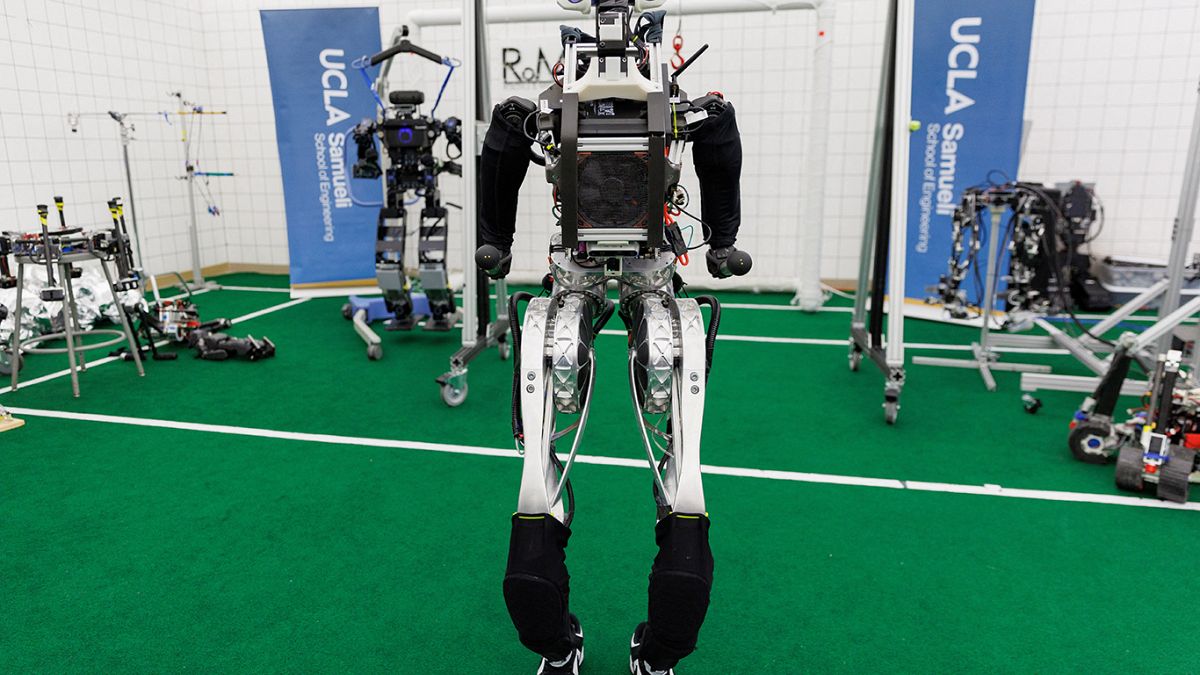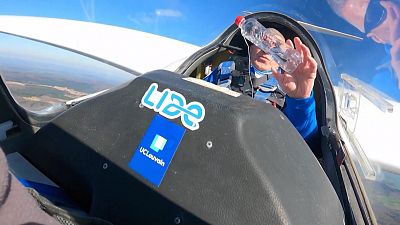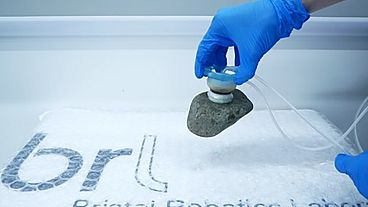The developers say humanoid robots should be able to play football if we hope they can be useful to us for more important things.
Mechanical engineers in the US say they have developed a humanoid robot that can walk faster than any other - and even play football.
Standing at 142 cm and weighing about 38 kg, ARTEMIS (for Advanced Robotic Technology for Enhanced Mobility and Improved Stability) is capable of walking on rough and unstable surfaces, and was designed with a particular focus on bipedal locomotion.
ARTEMIS has been clocked walking at 2.1 m/s, which would make it the world's fastest-walking humanoid robot, according to researchers at the University of California Los Angeles (UCLA).
The robot has actuators -devices that generate motion from energy -that behave like biological muscles. They’re springy and force-controlled, as opposed to the rigid, position-controlled actuators that most robots have.
The actuators are also electrically driven, making the robot less noisy and more efficient than robots with hydraulic actuators, which use differences in fluid pressure to drive movement.
Those controlled by hydraulic systems are notorious for leaking fluids.
'We're going to kick some balls’
The research team is planning to unveil its full soccer capabilities at RoboCup in France in July.
Its previous model DARWIN (Dynamic Anthropomorphic Robot With INtelligence) has won five world championships.
"That was eight years ago. I think it's about time for us to come back to RoboCup with Artemis. So, this year, in Bordeaux, we're going to kick some balls,” said Dennis Hong, Professor of Mechanical and Aerospace Engineering and Director of RoMeLa.
A football-playing robot might sound like a gimmick, but the research team says the underlying technology of ARTEMIS will be useful in other, more important areas.
“If you're a robot, cannot even play a game of soccer, how would you be able to use these robots for more important things, such as saving people's lives?” said Hong.
“We have robots that we're using for firefighting and disaster relief. All of these technologies we do for soccer-playing robots are being used for these more important applications,” he added.
For more on this story, watch the video in the media player above.



